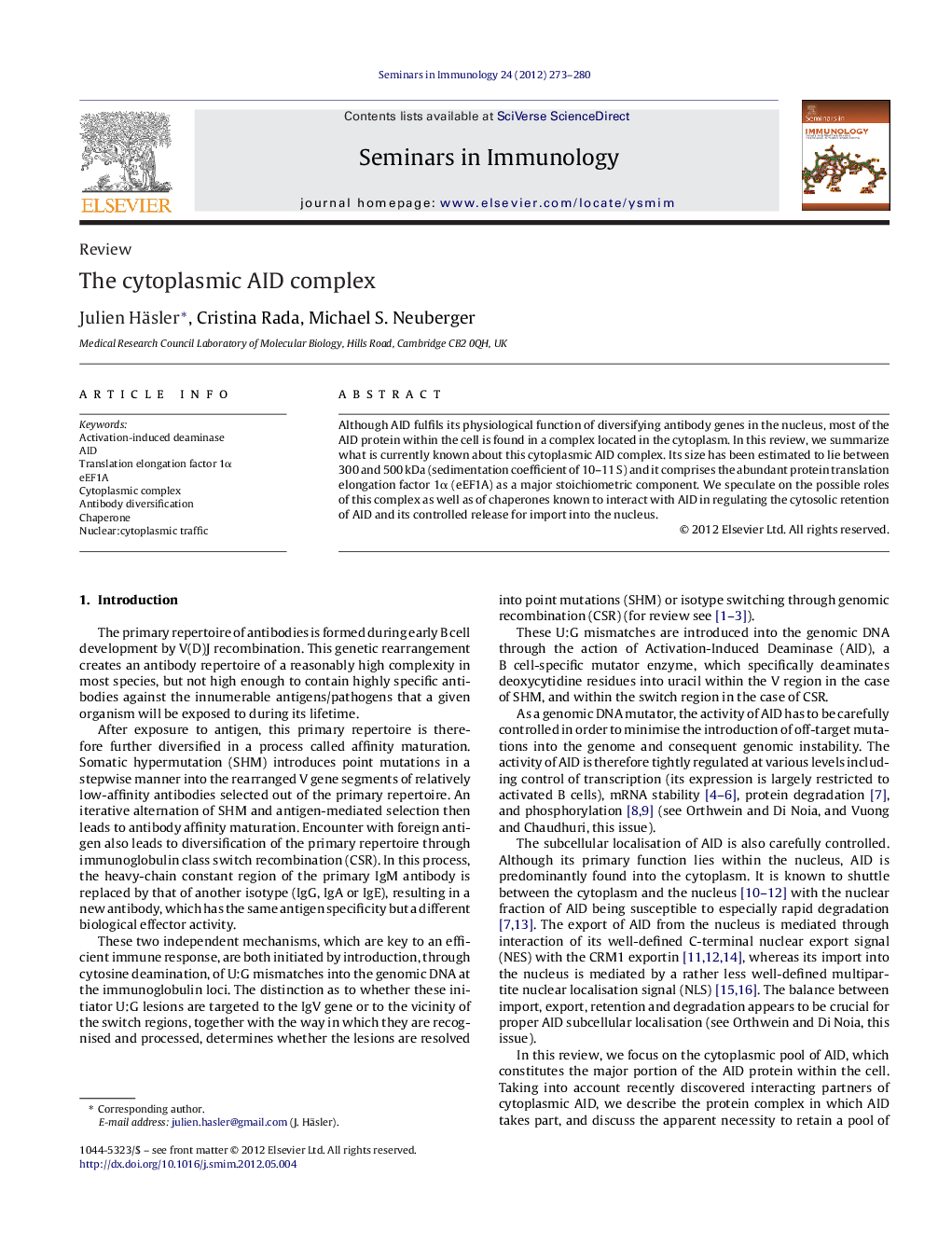| Article ID | Journal | Published Year | Pages | File Type |
|---|---|---|---|---|
| 3391505 | Seminars in Immunology | 2012 | 8 Pages |
Although AID fulfils its physiological function of diversifying antibody genes in the nucleus, most of the AID protein within the cell is found in a complex located in the cytoplasm. In this review, we summarize what is currently known about this cytoplasmic AID complex. Its size has been estimated to lie between 300 and 500 kDa (sedimentation coefficient of 10–11 S) and it comprises the abundant protein translation elongation factor 1α (eEF1A) as a major stoichiometric component. We speculate on the possible roles of this complex as well as of chaperones known to interact with AID in regulating the cytosolic retention of AID and its controlled release for import into the nucleus.
► AID is largely found as part of a 10-11S cytoplasmic complex. ► This complex also contains translation factor eEF1A. ► Results addressing monomeric/oligomeric nature of AID and eEF1A discussed. ► Mutations weakening AID/eEF1a interaction increase AID's nuclear localisation and genomic instability.
